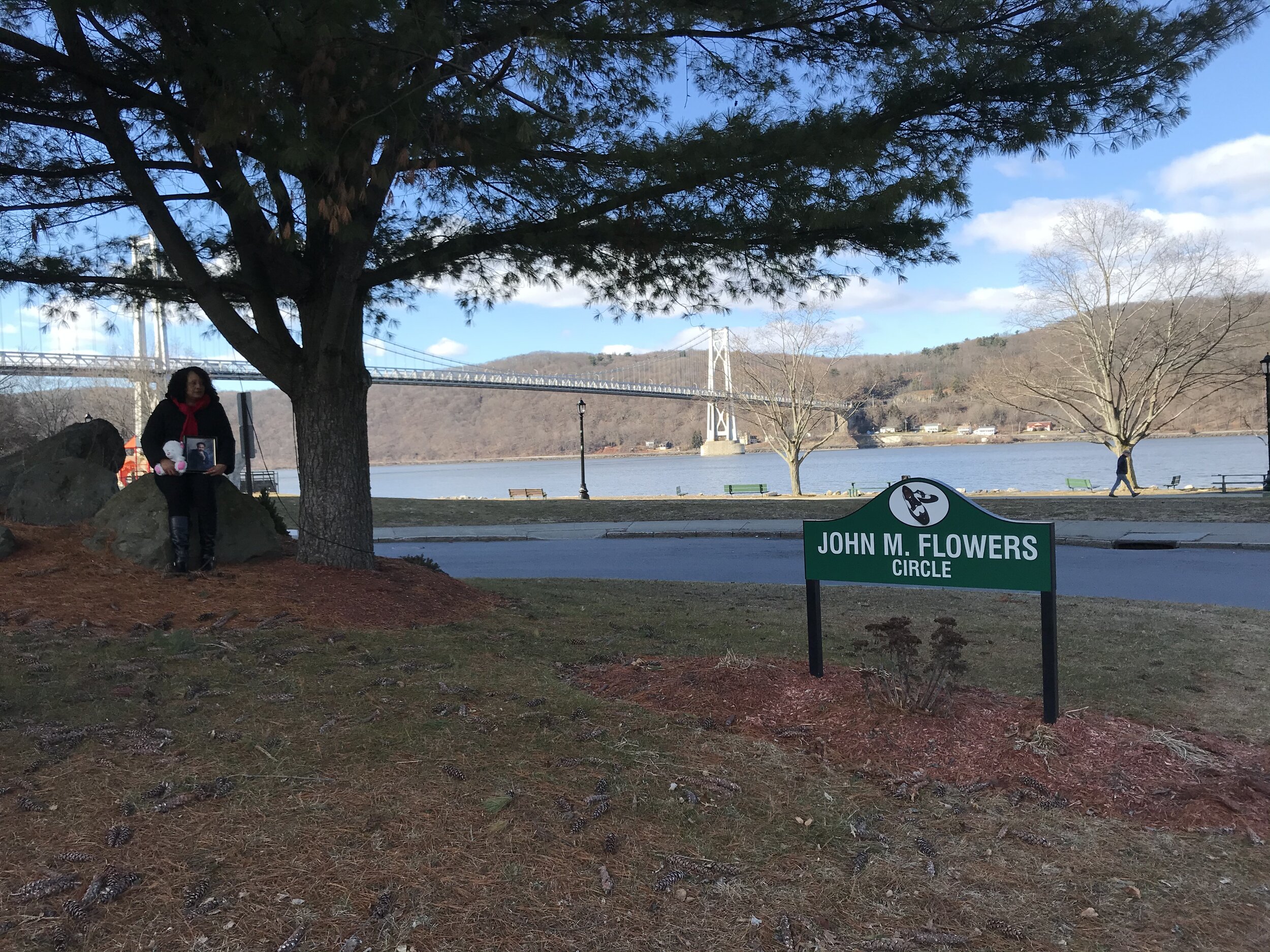BY: KARA JENSEN, SUMMER 2020 COLLABORATOR AT POWER IN PLACE
A few months ago, on a chilly February morning, I drove down to a small park on the banks of the Hudson River in downtown Poughkeepsie, New York. The photoshoot was taking place in Waryas Park at the John M. Flowers Circle, and we were there that day with John Flowers’ daughter, Poughkeepsie City Councilwoman Yvonne Flowers. I was fortunate enough to be able to interview Councilwoman Flowers—my first time ever interviewing someone—and the experience utterly transformed the way that I thought of local government and community power. In our current political climate, I feel as though it is more important than ever to recognize the importance of local officials in building safe and inclusive communities.
Councilwoman Flowers’ father, John, was the one who initially inspired and pushed her to get into politics in the first place. Renowned and beloved throughout Poughkeepsie and the larger Dutchess County area, John Flowers lived his life with the conviction that just one person can make a huge difference in someone’s life, and it brought him immense joy to help others in the community. He passed this conviction on to his children, as he actively involved them in his annual Easter Egg Hunts in Waryas Park, Father’s Day Parades, gift giving to veterans, and countless other community strengthening efforts.
During her time as a City Councilwoman, Yvonne Flowers has put her community first; emphasizing the importance of community spaces and sports programs for kids, all while carrying on her father’s legacy and expanding the number of eggs involved in the annual Easter Egg Hunts to the tens of thousands. Last summer she set up a free basketball program for the kids of Poughkeepsie, who loved it so much that they begged her to continue the program into the school year. Councilwoman Flowers is so passionate about her job and uses her position and energy to build up her community and invest in the well-being and futures of the children. Her passion really shone through in the interview and it was such a privilege to be able to meet and talk with her.
I interviewed Councilwoman Flowers in February, at a time when COVID-19 was not yet ravaging the United States and the murder of George Floyd had not yet sparked national outrage and protests across the country and world. Thus, we were not able to discuss many of the issues that people have been actively considering in recent weeks. However, as so much of my conversation with Councilwoman Flowers was about her and her family’s commitment to their community, I can’t help but connect her efforts to lift up her community to the larger conversation that is now taking place. As the Black Lives Matter movement has resurged at the forefront of national attention, many protestors and BLM supporters are calling to “Defund the Police.” In essence, this a call to divest the exorbitant amount of money that goes to police departments and invest instead directly into communities and essential services that have been largely neglected such as mental health care, housing, and education [1]. Many proponents of defunding the police want to dismantle law enforcement as we know it and instead invest in community approaches to create safer and more unified communities. I know that this is a huge issue and cannot be encompassed in just a few sentences, but I think the focus on investing resources into communities and ensuring that children have the freedom to join a basketball program and grow up safely is immensely important.
Reference
[1] Andrew, Scottie. “There's a Growing Call to Defund the Police. Here's What It Means.” CNN. Cable News Network, June 16, 2020. https://www.cnn.com/2020/06/06/us/what-is-defund-police-trnd/index.html.
Kara Jensen is a rising junior at Vassar College majoring in International Studies and minoring in Hispanic Studies and English. She is involved in the Vassar Alliance of Women in Foreign Affairs, Project Period, and is the Social Coordinator for her Disney-themed a cappella group. She is interested in international development, foreign policy, and human rights.
























